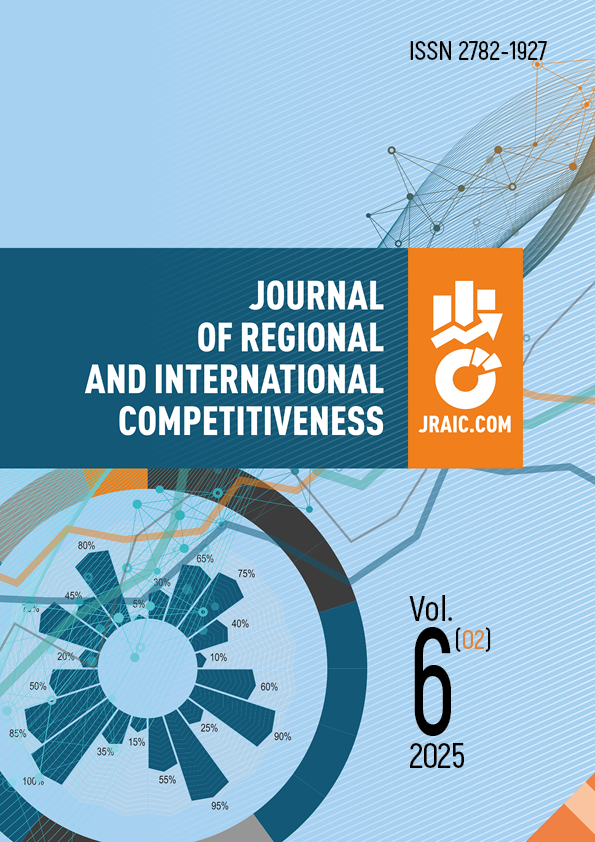Moscow, Moscow, Russian Federation
The article assesses the outcomes of the import substitution program in agriculture over the past decade, based on the analysis of functioning results of mushroom and truffle cultivation industry. It reviews the main measures of state support for agricultural producers, such as financial subsidies, preferential loans and tax incentives. Special attention is paid to the assessment of competition in the industry through the calculation of market power indices, including the concentration index, the Herfindahl-Hirschman index and the Hall-Tideman index. It has been found that the implementation of this program from 2014 until now has led to several significant outcomes. Firstly, it stimulated active growth in domestic mushroom industry by providing financial subsidies, preferential loans, tax incentives, and infrastructure support, which allowed Russian producers to expand their capacities and improve product quality. Secondly, the implementation of this program has made it possible to almost completely eliminate foreign suppliers from the market, shifting market dominance to domestic companies. At the same time it was determined the implementation of this program didn't let to avoid the dependence on foreign technologies which is currently a new challenge for the industry requiring further adjustments to state support measures for national production. The findings reveal that while the program succeeded in replacing imported products, long-term sustainability requires investments in domestic technological capabilities. The continued technological dependence creates barriers to technological independence and highlights the need for a new phase of the program focused on developing domestic technological capabilities and maintenance infrastructure to ensure long-term sustainability and competitiveness in the sector. The article concludes with recommendations for improving future policy directions, including greater support for domestic innovation, machinery manufacturing, and staff training.
import substitution; government support; agriculture; mushroom and truffle production; market power concentration indices
1. Chelnokova, O. Y. (2018). Modeling the use of the Herfindahl-Hirschman index in analyzing the degree of concentration of firms in the industry market. Professional'naya orientaciya, (2). Retrieved from https://cyberleninka.ru/article/n/modelirovanie-ispolzovaniya-indeksa-herfindalya-hirshmana-pri-analize-stepeni-kontsentratsii-firm-na-otraslevom-rynke (accessed: 03.15.2025) (in Russian).
2. Gavrilenkov, E., & Struchenevsky, A. (2014). From innovation to import substitution. EAU. Praktika, 86(5), 37-41. Retrieved from https://cyberleninka.ru/article/n/ot-innovatsiy-k-importozamescheniyu (accessed: 03.15.2025) (in Russian).
3. Golosman, E. Z., & Volchenkova, S. A. (2017). Import substitution catalysts. Neftegazochimiya, (3), 41-51. Retrieved from https://cyberleninka.ru/article/n/katalizatory-importozamescheniya (accessed: 03.15.2025) (in Russian).
4. CYKZ.RU. Import substitution in action (2015). Exhibition Oil and Gas, 45(6). Retrieved from https://cyberleninka.ru/article/n/importozameschenie-v-deystvii (accessed: 03.15.2025) (in Russian).
5. Import substitution is working. (2014). CPM, 85(4), 39-42. Retrieved from https://cyberleninka.ru/article/n/importozameschenie-rabotaet (accessed: 03.15.2025) (in Russian).
6. Klyushin, V. V., & Romanets, I. I. (2023). Prospects of import substitution in Russia. Innovacionnaya ekonomika: perspektivy razvitiya i sovershenstvovaniya, (2), 102-107. Retrieved from https://cyberleninka.ru/article/n/perspektivy-importozamescheniya-v-rossii (accessed: 03.15.2025) (in Russian).
7. Kulagin, V. A., Grushevenko, D. A., & Kozina, E. O. (2015). Effective import substitution. Energetika i geopolitika, (1), 49-56. Retrieved from https://cyberleninka.ru/article/n/effektivnoe-importozameschenie (accessed: 03.15.2025) (in Russian).
8. Obolensky, N. V. (2015). From the experience of import substitution. Vysshee obrazovanie segodnya, (6), 47-50. Retrieved from https://cyberleninka.ru/article/n/iz-opyta-importozamescheniya (accessed: 03.15.2025) (in Russian).
9. Rakhlina, L. V., & Volkova, T. V. (2024). Import substitution: problems and prospects. Ekonomika. Professiya. Biznes, (2). Retrieved from https://cyberleninka.ru/article/n/importozameschenie-problemy-i-perspektivy-1 (accessed: 03.15.2025) (in Russian).
10. Shirokova, I. (2016). Investments in import substitution. Remedium, (5), 14-22. Retrieved from https://cyberleninka.ru/article/n/investitsii-v-importozameschenie (accessed: 03.15.2025) (in Russian).
11. Svishcheva, M. I. (2017). Dynamics of mushroom production, export and import in Russia / M. I. Svishcheva. Upravlenie riskami v APK, (3), 44-52. DOI:https://doi.org/10.53988/24136573-2017-03-05.
12. Urazaeva, L. Yu., & Galimov, I. A. (2022). Mathematical modeling of import substitution, The Eurasian Scientific Journal, 14(3), 07ECVN322. Retrieved from https://cyberleninka.ru/article/n/matematicheskoe-modelirovanie-importozamescheniya (accessed: 05.26.2025) (in Russian).



















